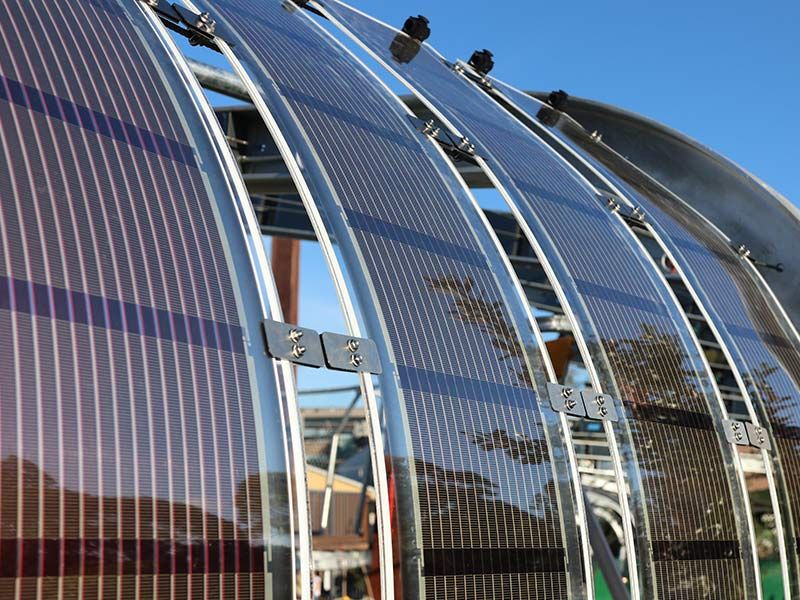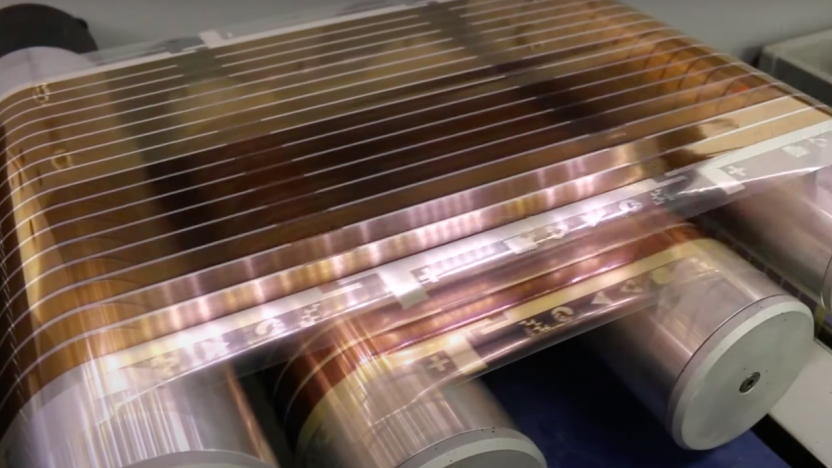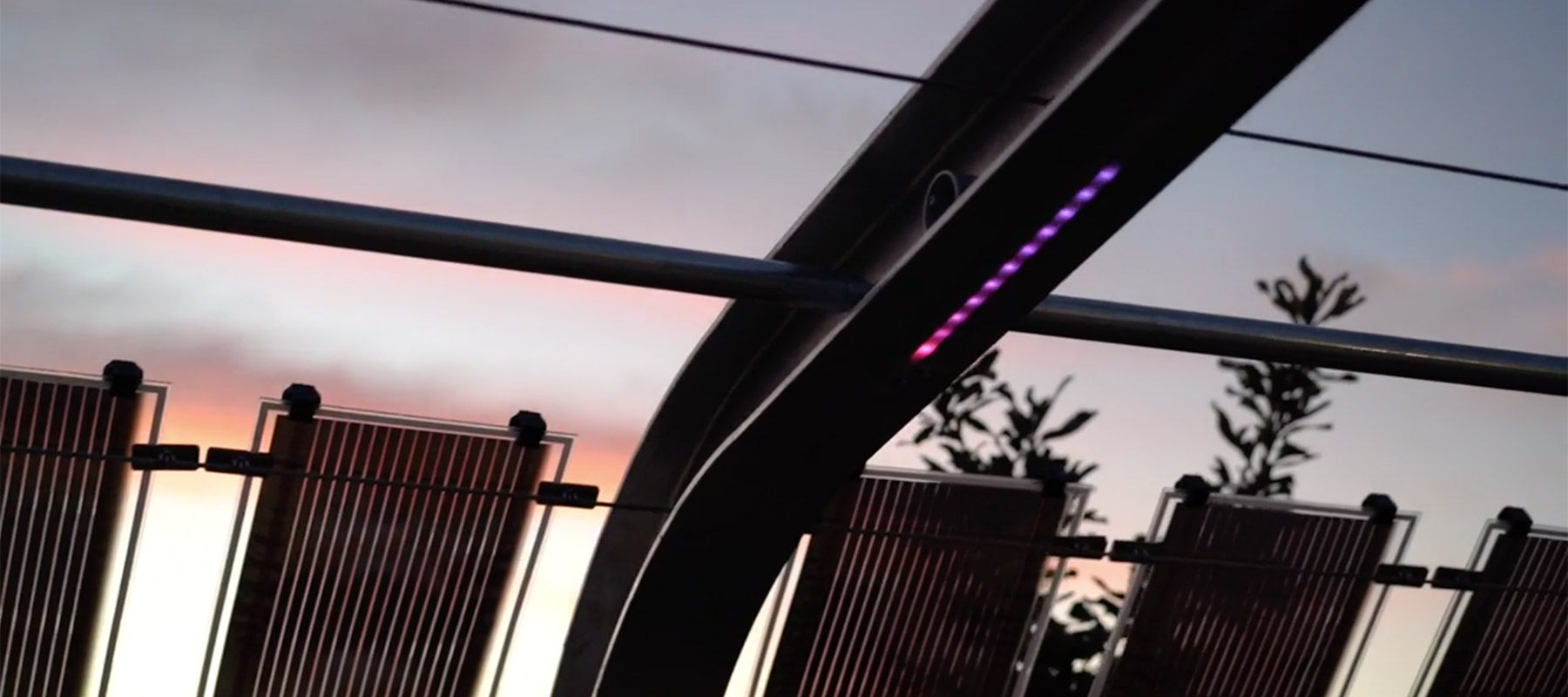
- Sustainable Planet -
- 7mins -
- 531 views
Revolutionary New Printed Solar Debuts in Sydney
An emerging renewable energy material – printed solar cells, is being trialled in a public setting in Australia for the first time as it nears commercial readiness.
Innovative solar technology is made using regular printing machines
The University of Newcastle (Australia) renewable energy technology — which is ultra light-weight, ultra flexible, recyclable and cheap to manufacture, will power interactive public lighting in Sydney. Amazingly, the revolutionary new material, similar in thickness and appearance to a chip/crisp packet, is manufactured using conventional printers.
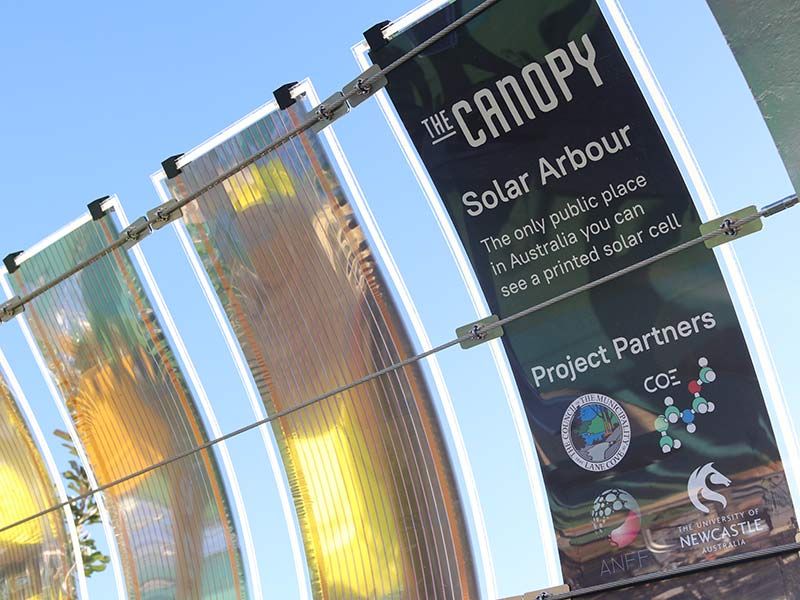
showcasing ‘what’s next’ in energy generation
Creator of the organic printed solar material, Physicist Professor Paul Dastoor from the Faculty of Science said his team were excited to take their ‘science to the streets’ in what represented significant progress toward commercial availability of the material.
“Globally, there’s been so few of these installations, we know very little about how they perform in a public setting. This installation is the next critical step in accelerating the development and commercialisation of this technology. It presents a new scenario for us to test performance and durability against a range of new challenges,” said Professor Dastoor.
“Located within Lane Cove Council’s vibrant new urban space ‘The Canopy’, this demonstration plucks extraordinary science from behind sealed lab doors, and places it in an ordinary environment, where people will interact with it as they go about their grocery shopping, play with their children in the park, or enjoy food in one of the nearby restaurants. It’s an effortless and subtle way to spark conversation and showcase ‘what’s next’ in energy generation to thousands of people.”
Source: Newcastle.edu.au
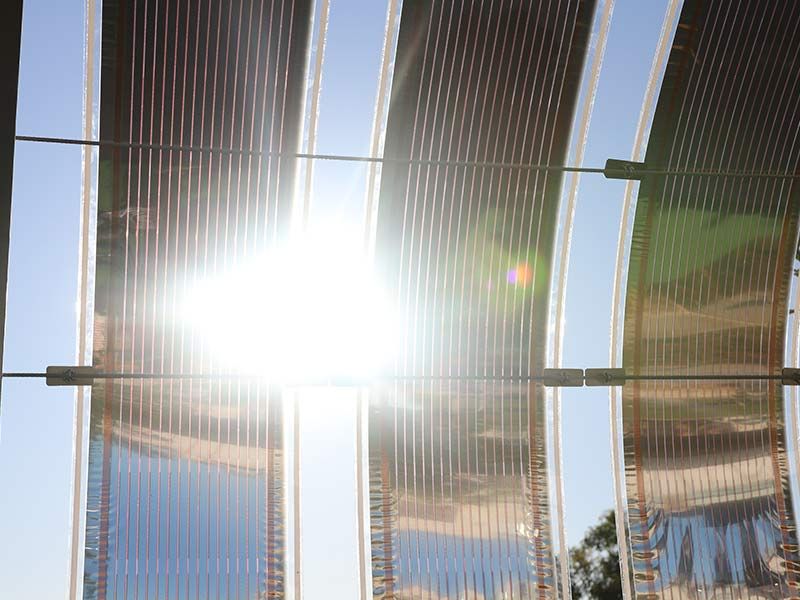
bringing the world closer to a sustainable future
Professor Dastoor said he was hopeful the public installation would prompt further discussion on the subject of energy as the Federal Government considered submissions to its technology investment roadmap.
“The government is seeking to bring down carbon emissions over the next 30 years and the community has been very engaged on this subject. Globally, there are many research groups like ours working on sustainable energy technologies and now, via the technology investment roadmap, is our opportunity to ensure we invest in and deliver clever solutions,” said Professor Dastoor.
Director of the University’s Newcastle Institute for Energy and Resources (NIER), Professor Alan Broadfoot, said the University was committed to bringing the world closer to a sustainable future through its next generation resources engagement priority.
“The printed solar project highlights the transformational research coming out of NIER through valued partnerships with government, industry, and the community in critical areas such as new energy technologies,” said Professor Broadfoot.
Source: Newcastle.edu.au
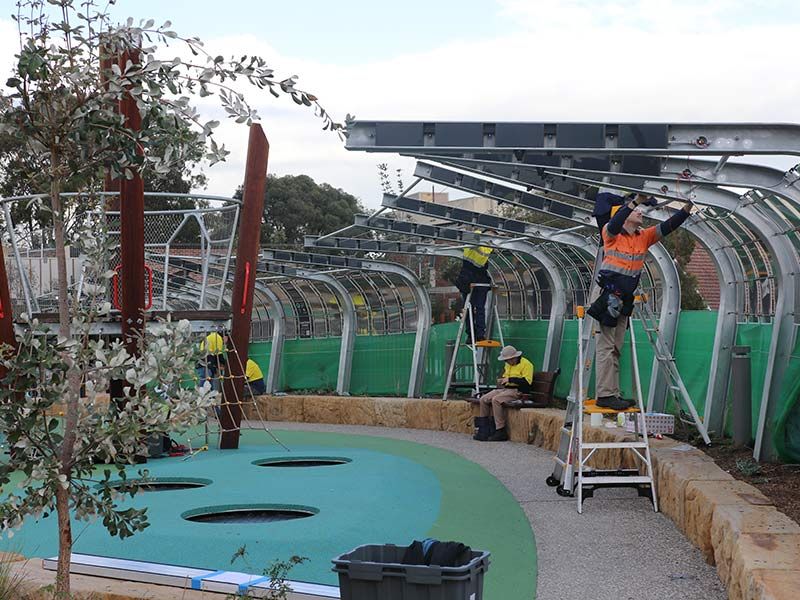
A new advanced manufacturing industry for Australia
This installation follows a successful commercial-scale public sector installation with CHEP in late 2018. Professor Dastoor said global interest in printed solar was the highest he had ever witnessed and that an advanced manufacturing facility for printed solar in NSW was the imminent goal for his team.
“We have a world-class manufacturing facility at the University’s Newcastle Institute for Energy and Resources (NIER), which has been generously supported by the Australian National Fabrication Facility (ANFF). This print facility can manufacture hundreds of metres of material a day, however we’re now reaching the point where we need to significantly scale this level of production,” said Professor Dastoor.
“This technology will really disrupt and revitalise the contracting print industry. Printed solar is manufactured on conventional printers – our lab-scale system previously manufactured wine labels.”
“As a diverse team of physicists, chemists, engineers and educators, we’re considering not just the scaling of material production, but the education and training framework that will wrap around the industry to train and retrain an entirely new workforce.
“As an educator and a father my greatest hope is that we may, through this public display, inspire young people interested in STEM to imagine the exciting and entirely new career possibilities that will exist for them, brought about through new industries like these. Young people inspired by this demonstration could become our first, pivotal wave of high-tech workers helping to bring printed solar to fruition – that’s an incredibly exciting idea.”
Source: Newcastle.edu.au
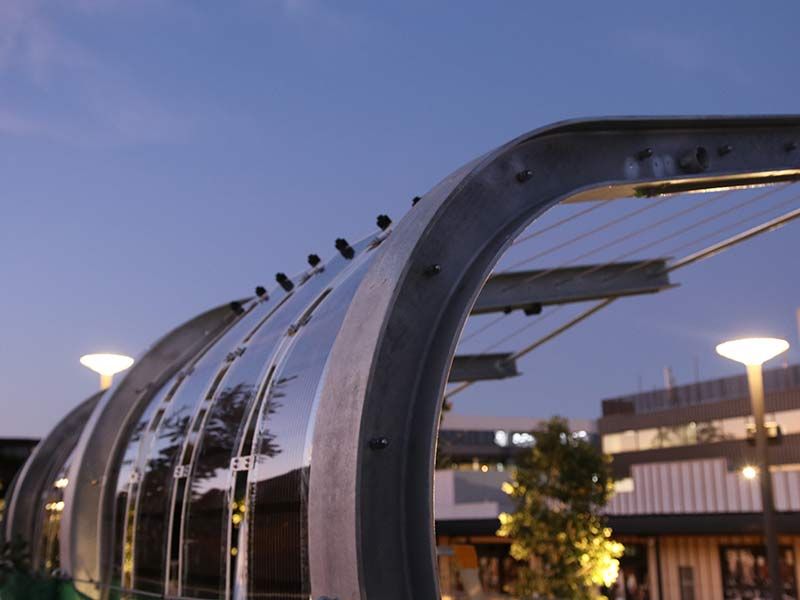
An outdoor science museum
In something more akin to a scene from Red Dwarf, visitors to the installation will be treated to a one-on-one augmented reality experience featuring an immortalised, holographic Professor Dastoor.
“Compared to familiar energy technologies, this material has almost a surreal quality – it’s supremely light, hyper-flexible and incredibly thin. As this will be the first time people interact with this material unaccompanied, we wanted to create a way for one of our Centre for Organic Electronics (COE) scientists to be there to provide interpretation, and so in one of the stranger moments of my career thus far…I’ve become a hologram,” said Professor Dastoor.
Attached to a highly sculptural, modernistic arbour and (for this application) toughened by a polycarbonate encasing, the panels generate power during the day, which is battery stored to power a dazzling, interactive light display at night.
“We’ve installed sensors as part of the display so the lights will actually detect movement and follow people as they move along the arbour. The lights are programmable so we can set them to specific colours to celebrate awareness events or other significant moments,” said Professor Dastoor.
Source: Newcastle.edu.au
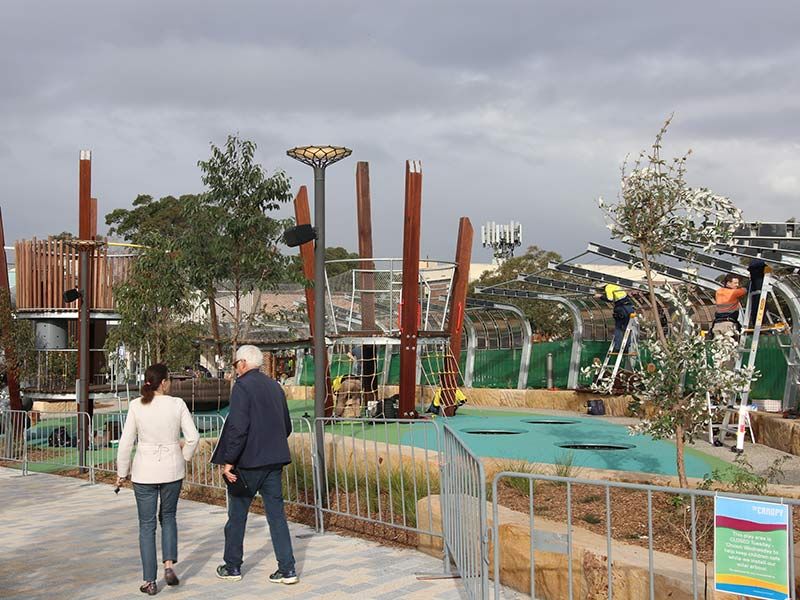
Benefits and applications
Printed solar is cheap to manufacture, at a production cost of less than $10 per square metre and rapid to produce, with commercial scale equipment capable of producing kilometres of material a day.
“No other renewable energy technology can be manufactured as quickly. The low cost and speed at which this technology can be deployed is exciting as we need to find solutions, and quickly,” said Professor Dastoor.
With over 99% of the panels consisting of PET (polyethylene terephthalate), the material can be recycled – a distinct advantage over traditional silicon panels.
“We’re currently investigating recycling processes for this material. Our hope is that we can separate the outer PET layers and reuse them to make new panels with minimal processing,” said Professor Dastoor.
The low-cost, light weight, flexibility and durability of the material are inspiring a range of possible applications including disaster relief and recovery applications; retractable recharging systems for electric vehicles, caravans/camping and the defence industry; floating covers for dams and pools; yacht sails; smart blinds for residential and high-rise buildings; greenhouse covers and more.
Professor Dastoor said his goal was to coat as many surfaces as possible with the material.
“Imagine a world where everyone has access to electricity, and where every surface can generate clean, low cost, sustainable energy from the sun. That’s a world I want to live in,” said Professor Dastoor.
Source: Newcastle.edu.au
